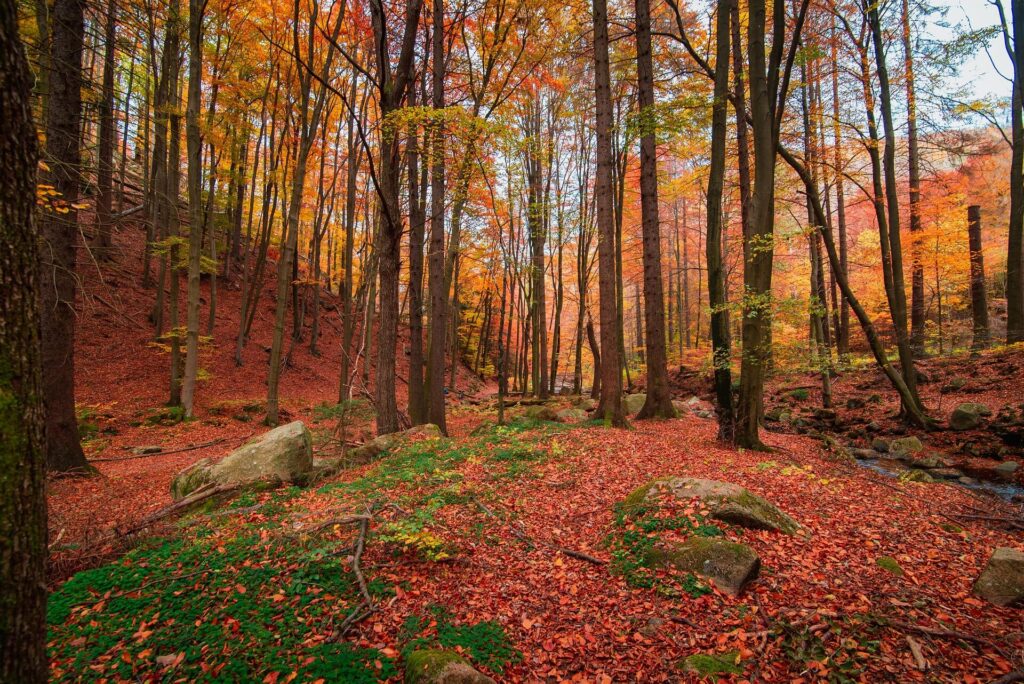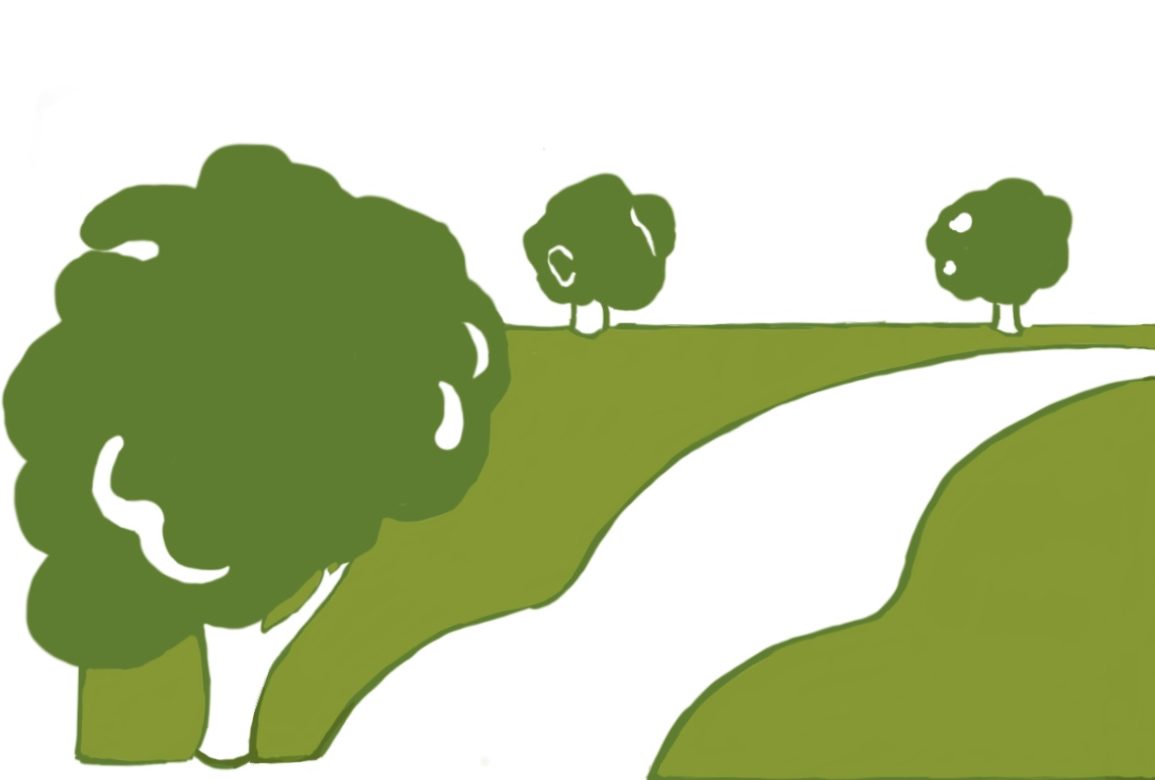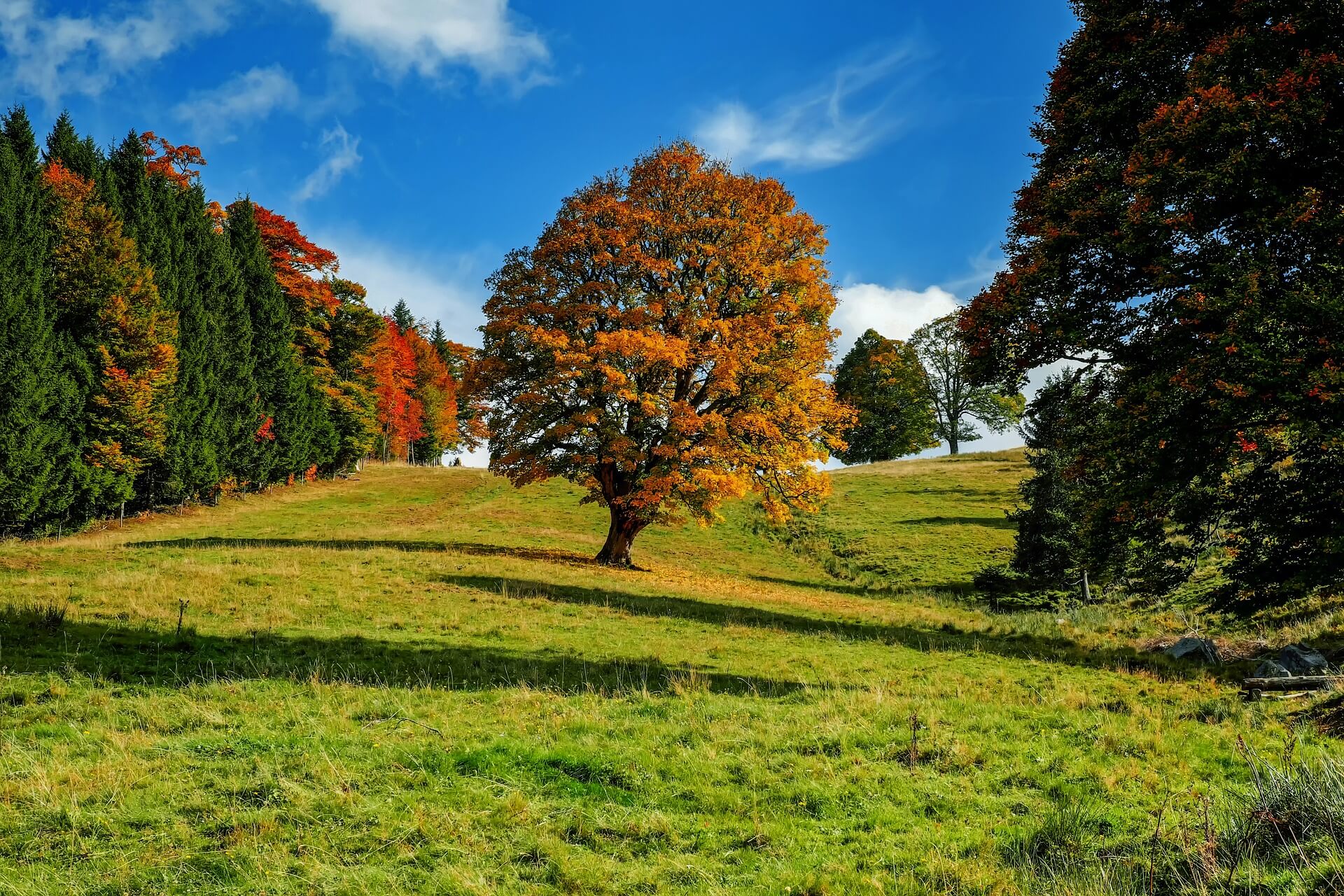Autumn is a glorious time of year. Grass has recovered from the heat of summer and looks green rather than straw, whilst trees and shrubs exhibit vibrant colours of red, orange and brown. Of course, it can also be a time of storms with heavy rain and gales as the daylight dwindles and nights turn colder.
The colours of autumn vary with the weather. The green of plants is due to the chlorophyll, the wonderful substance that can absorb sunlight and carbon dioxide to produce sugars and emit oxygen. At this time of year, deciduous plants are beginning to close down for winter, brought on by falling temperatures and shorter daylength. Lower temperatures destroy chlorophyll but the leaves contain other pigments including yellow xanthophyll, orange carotene and red anthocyanin, which come to the fore as the chlorophyll declines. On warm days as the sugars become more concentrated more anthocyanin is produced enhancing the red colour. Hard frosts however, destroy the other pigments too and the leaves soon fall off. The best autumn colours can be seen in a period of warm sunny days and cold, but not frosty nights.
Different species have different pigment levels, so some have more colourful autumn displays than others, but it is still the weather that has the biggest role. Wet cloudy stormy autumns have more subdued colours whilst gales may strip the leaves from the trees prematurely. In my days as a lecturer at Cirencester, I took my students each year to the National Arboretum at Westonbirt, the date dictated by the university calendar. Some years the trees were still green but one year the last leaf was ripped from its tree by a gale as we arrived.
It has been a great year for many fruits and nuts. As I walk through the copse to exercise my dogs each afternoon, my boots crunch on acorns and sweet chestnuts. There has been an abundant crop of apples which, although a little small in size, are very sweet and juicy. Other fruits have enjoyed a bumper year too but many root vegetables have suffered severely in the drought. Potatoes are small and few in number whilst sugar beet and parsnips are shrivelled too.

On the arable farms in this area, the atmosphere is pensive. Despite the drought, harvest was remarkably good on our chalk soils and was early, allowing time for autumn cultivations and drilling. Seedbeds have been excellent as even clay soils have crumbled into fine tilth as they were so dry. It is a good autumn for minimum tillage and direct drilling as there is very little compaction in the soil due to fracturing in the drought.
Oilseed rape was drilled early in an attempt to steal a march on the flea beetle but lack of moisture delayed germination and establishment. As a result, many crops were destroyed almost entirely by the pest. There have been reports of the use of companion crops to help the rape establish and fend off attack. Fenugreek emits an odour that deters flea beetle, berseem clover is a legume that fixes nitrogen and buckwheat establishes very quickly with a broad leaf canopy. For some reason, local farmers seem reluctant to take this extra protection.
The drilling of autumn cereals has been easy with plenty of time after the early harvest and good seedbeds. Rain has come at opportune moments to provide moisture for germination and establishment whilst soil temperatures remain high. The main doubt holding farmers back is the cost of growing the crops and the potential return. One farmer was offered imported ammonium nitrate at £830 per tonne and advised to take it whilst it was still available. Winter beans is one option as a legume but there may be more spring sowing to reduce costs, again perhaps peas or beans. The value of wheat and rape is high but growing the crops at current input costs represents a risk.
Livestock farmers are the most worried this autumn. For months most cattle and sheep have been fed hay or straw in parched pastures, eating into winter fodder stocks. The grass may have greened up but there is little growth. Early silage crops were reasonable but there was limited regrowth through the summer whilst forage maize has been disappointing. After weaning in the summer, ewes are kept short of grass for a time to aid drying off, then put onto lush pasture to improve body condition and flush eggs prior to tupping around this time of year for March/April lambing. But there has been no lush pasture. Some sheep farmers plant stubble turnips after winter barley but germination was delayed by drought so that provides little solace for the near future. Overall, there is concern about whether there is enough fodder to last the winter and what the impact will be on lambing percentage in the spring.
My father used to say the he enjoyed the autumn because the lack of daylight meant he could not garden after tea and thus he could relax in front of a log fire. Enjoy the colours of autumn as we have winter to look forward to.

